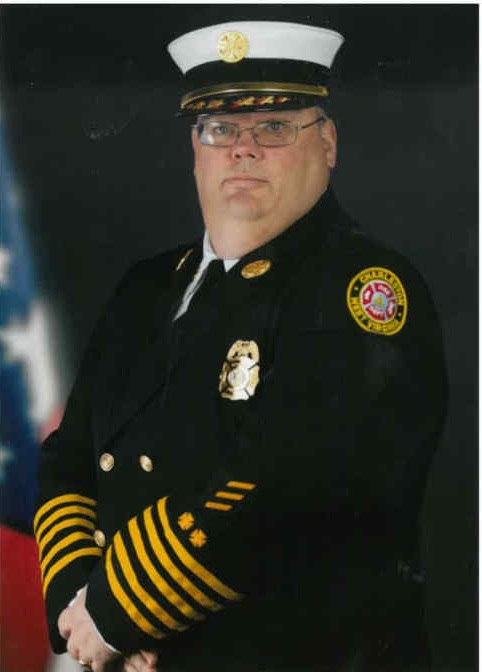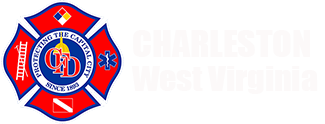CHARLESTON FIRE DEPARTMENT
Chief's Office
The Charleston Fire Department
The Charleston Fire Department proudly protects 54,000 people who live in an area of 33 square miles among the green hills and valleys surrounding the Kanawha and Elk Rivers. Charleston is the Capital of West Virginia and is the state’s largest, most populous city. Three interstates converge in Charleston, Interstates 64, 77 and 79, linking the Midwest cities to those in the North, East, and South. The metropolitan area surrounding Charleston is much larger, with more than 200,000 people commuting into the city for work and recreation.
The Charleston Fire Department has an ISO rating of two and operates out of eight stations with 169 paid professionals. These stations house eight Engine Companies, one Ladder Company, one Rescue Company and five Advanced Life Support Ambulance Units. The Fire Department is also home to the West Virginia Regional Response Team Task Force One and houses Building Collapse and Hazardous Materials Units. The members of the department are specially trained in fire fighting, emergency medical services, vehicle rescue, technical rescue, hazardous materials and water rescue.

Chief Craig Matthews
History of The Charleston Fire Department
Fire Chiefs
| Years | Chiefs |
|---|---|
| 1893-1899 | E.”Bud” Callahan |
| 1899-1904 | Riley Sanders |
| 1904-1907 | James White |
| 1907-1913 | C.C. Rand |
| 1913-1914 | H.J. Callahan |
| 1914-1916 | W.W. Graham |
| 1916-1919 | J.C. Anderson |
| 1919-1926 | W.W. Graham |
| 1926-1949 | J.L. McLane |
| 1949-1970 | O.E. Boggess |
| 1970-1971 | J.C. Saunders |
| 1972-1985 | John W. Britton |
| 1985-1989 | Ira C. Gunter |
| 1990-1991 | H. “Joe” Shaffer |
| 1991-1997 | Carl E. Beaver Sr. |
| 1997-2002 | Raymond V. Stewart |
| 2002-2006 | Grant K. Gunnoe |
| 2006-2011 | R.C. Stanley |
| 2011-2014 | Charles Overstreet |
| 2014-2018 | Scott Shaffer |
| 2018-2019 | Robert Sutler |
| 2019-2020 | Jeffrey Jackson |
| 2020-2023 | Shawn Wanner |
| 2023-present | Craig Matthews |
Important Dates in CFD History
The official name of the department was the Kanawha Steam Fire Engine and Hose Company and the official roster was as follows: Stalnaker Wellington, President; Joseph Teezell, Vice-president; Thomas J. Newhouse, Secretary; Allen Saunders, Engineer (four generations of Saunders have been on the Charleston Fire Department); Albert Booker, Chief Piperman; and Richard Stalnaker, Director of Hose.
